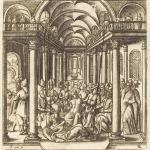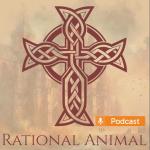I’ve been re-reading The Fellowship of the Ring and the immeasurable wealth of Bilbo is mentioned as one of the fixed myths of the folk of Hobbiton. At one point, sundry residents of the town flood into Bag End, nosing about for treasure, convinced that there’s no end to it.
Something similar obtains in the world of ignorant popular anti-Catholicism in the English-speaking world concerning the limitless wealth of the Vatican (and, by the way, that world of ignorant anti-Catholicism extends to not a few Catholics in the US). The notion is that the Vatican is a sumptuous treasure house worth enough instantly end world poverty if those greedy prelate would just sell off their wealth (you know, the way the nationalization of the Russian Churches, instantly ended the state-created famines of the Stalin era).
Here’s the actual story from the intrepid John Allen:
In the public’s imagination, the Vatican is awash in priceless art, hidden Nazi gold, plundered treasures from around the world, and vast assets tucked away from prying eyes in the Vatican Bank. Reality is far more prosaic. To put it bluntly, the Vatican is not rich. It has an annual operating budget of $260 million, which would not place it on any Top 500 list of major social institutions. To draw a comparison in the non-profit sector, Harvard University has an annual operating budget of a little over $1.3 billion, which means it could run the equivalent of five Vaticans every year and still have pocket change left over. The Holy See’s budget would qualify it as a mid-sized American Catholic college. It’s bigger than Loyola-Marymount in Los Angeles (annual budget of $150 million) or Saint Louis University ($174 million), but substantially less than the University of Notre Dame ($500 million).
The total patrimony of the Holy See, meaning its property holdings (including some 30 buildings and 1,700 apartments in Rome), its investments, its stock portfolios and capital funds, and whatever it has storied up in a piggy bank for a rainy day, comes to roughly $770 million. This is substantial, but once again one has to apply a sense of scale. What the Holy See calls “patrimony” is roughly what American universities mean by an “endowment” – in other words, funds and other assets designed to support the institution if operating funds fall short. The University of Notre Dame has an endowment of $3.5 billion, meaning a total 4.5 times as great as the Vatican’s.
But what of the some 18,000 artistic treasures in the Holy See, such as the Pietà, that don’t show up on these ledgers? From the Holy See’s point of view, these artworks are part of the artistic heritage of the world, and may never be sold or borrowed against. Michelangeo’s famous Pieta statue, the Sistine Chapel, or Raphael’s famous frescoes in the Apostolic Palace are thus listed at a value of 1 Euro each. In fact, those treasures amount to a net drain on the Holy See’s budget, because millions of Euros have to be allocated every year for maintenance and restoration.
It was that notorious enemy of the poor, Dorothy Day, who opposed stupid schemes to take art out of the Churches because she was perfectly aware of the fact that it was actually a scheme to make even more art the private property of a few rich people. At present, the “treasures of the Vatican” are the property of every beggar in Rome who wishes for something to alleviate the pain of his life and lift his thoughts to God. Under the Judas Iscariot Plan for Wealth Redistribution (Motto: Why were these things not sold and the proceeds given to the poor?”) the “treasures of the Vatican” become treasures in some guy’s villa or in some pricey museum where cultured despisers can go to sneer at the stuff people used to believe.
Hat tip: Western Confucian















